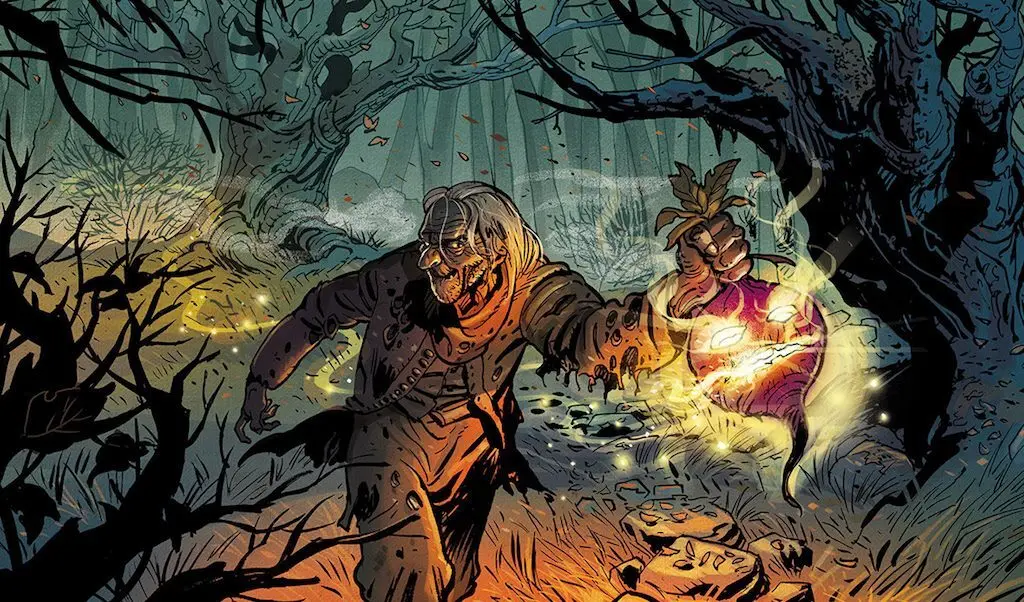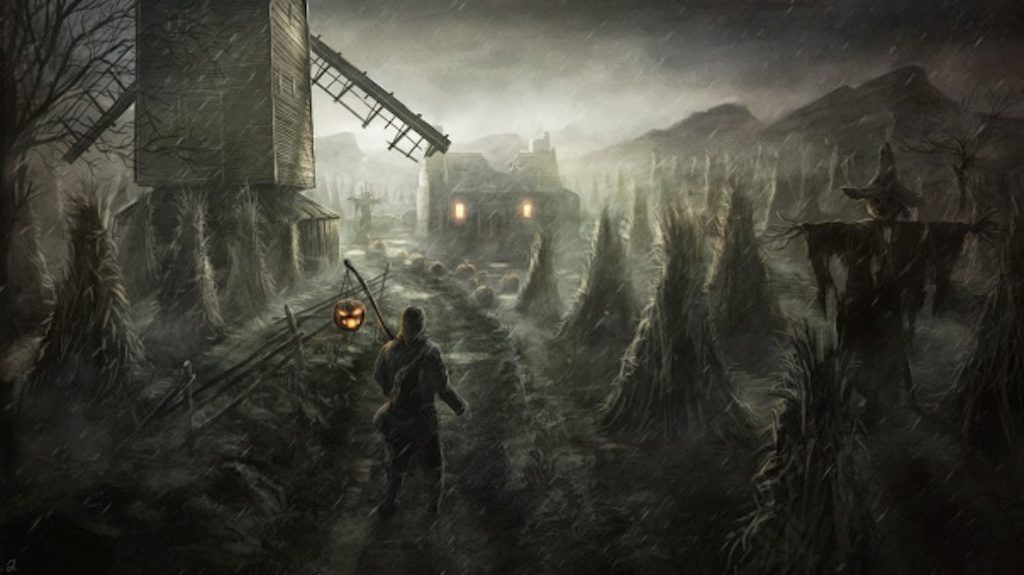The traditions of Halloween originate from a blend of Samhain, the Celtic celebration marking the end of the summer harvest, and Christian traditions honoring saints and martyrs. Trick-or-Treating and scary costumes are just two ancient traditions that have survived. Today, one of our most beloved Halloween customs is pumpkin carving. This too has been around for many centuries, except that in Ireland, they used turnips and rutabagas. An old Irish tale explains the origin of the jack-o’-lantern and how the scary gourds got their name. It all goes back to one horrible man people called Stingy Jack, and this is his story.

The old Irish tale of Stingy Jack explains the origin of the Jack-o’-Lantern. Image: Jovan Ukropina.
The Legend of Stingy Jack
This is just one version of an old tale about a foul drunkard of a blacksmith known as Stingy Jack. Jack was a two-faced, deceitful schemer who thrived on manipulating people. His selfish spirit possessed not a shred of humanity or kindness for anyone, and the homeless beggars only repulsed him. Word of his vile reputation reached Satan who took more than a passing interest in this evil man, so he put plans in motion to meet him.
One evening in the dark hills of rural Ireland, one of Satan’s devils posed as a dead man waiting for Stingy Jack to run into him. When Jack came across the body, a deranged face with wide eyes and an evil grin stared back at him. Stingy Jack instantly realized that his time was up and that the devil had come to collect his soul. He begged for a final request which the demon granted. Jack told him that he wanted just one more drink before he had to depart the world, and he took the devil to the nearest tavern.
Devil in the Coin Trick
One drink turned into another and then another. Before too long their consumption of alcohol exceeded the demand and there was nothing left for the pair to drink. When it was time for them to settle up, Jack didn’t have any money. He casually turned to his new drinking buddy and suggested that, since he was a devil with magical powers, he could simply transform himself into a piece of silver to pay the tab. The devil obliged. But instead of paying, Jack rammed the coin into his pocket. Aware that Stingy Jack had double-crossed him, the devil fought to get out. However, a crucifix in the pocket trapped him in. Jack made a deal with the devil. If he would leave Jack alone for a decade, he would release him from the coin – and the deal was made.
The Apple Tree Trap
Once this amnesty was reached, the devil found Jack once more, ready to take him to hell. This time, however, Jack asked for an apple from a nearby tree to quell his hunger on the long journey. While the devil selected an apple, Jack carved four crucifixes on the bark of the tree trapping the evil being within its branches. On the condition that Jack will not go to hell, Jack once again offered the demon his freedom. Once again there was little choice but to submit to the man’s wishes. Stingy Jack continued the rest of his life safe in the knowledge that he outsmarted the devil not once, but twice.
The Origin of Halloween from Samhain to Trick-or-Treat
Jack Forever Roams the Earth
Many years of alcoholism finally took their toll. It seemed that Stingy Jack could outsmart the devil, but he could not outsmart death when he found himself standing in front of the Pearly Gates. St. Peter turned him away. Heaven, as many people know, would not welcome a lying, deceitful drunk. Undiscouraged, Jack headed towards hell where his nemesis was biding his time to get revenge. Satan also refused him entry citing the agreement they made when Jack was very much alive.

Stingy Jack’s restless soul wanders the countryside until Judgment Day. Source: The Stranger’s Bookshelf.
Although neither heaven nor hell allowed Jack entry, Satan did grant one last wish. Jack asked for an ember from the fiery depths to give him a little light while he wandered the world in darkness. Satan picked one small red hot coal and gave it to Jack. To carry his burning ember, Jack found a turnip and hollowed it out, turning it into a makeshift lantern. Ever since then, Jack’s ghost could be seen wandering aimlessly around the Irish countryside. Whenever locals saw mysterious lights, they would say, “That’s just Jack o’ the lantern.” Later, the term became synonymous with the name for Stingy Jack’s wandering spirit – jack-o’-lantern.
The Gaelic Origin of the Jack-o’-Lantern
With evil Jack damned to wander the world until Judgment Day, the Gaelic Irish community did not want his spirit visiting their homes. So they took precautions on October 31, the day of the Celtic festival of Samhain. On this day, the spirits of the netherworld could pass through to the world of the living. Ghosts were attracted to the living, so each home carved a menacing face into turnips and rutabagas and prominently displayed them on their doorsteps with a burning ember (or candle) just like Jack’s lantern. This would keep away the spirits, including Jack, they hoped.
In the 19th and early 20th centuries, the Irish migrated to America and brought along their beliefs, holidays, and traditions. They quickly realized that there was a type of gourd indigenous to America that was bigger and better for carving jack-o’-lanterns. Of course, this was the pumpkin. And on the same day as Samhain, October 31, 145 million Americans will have bought and carved a homemade jack-o’-lantern to place on their doorsteps.
Sources
History of the Jack O’Lantern
Mentalfloss
Sites pulled on 27 October 2015